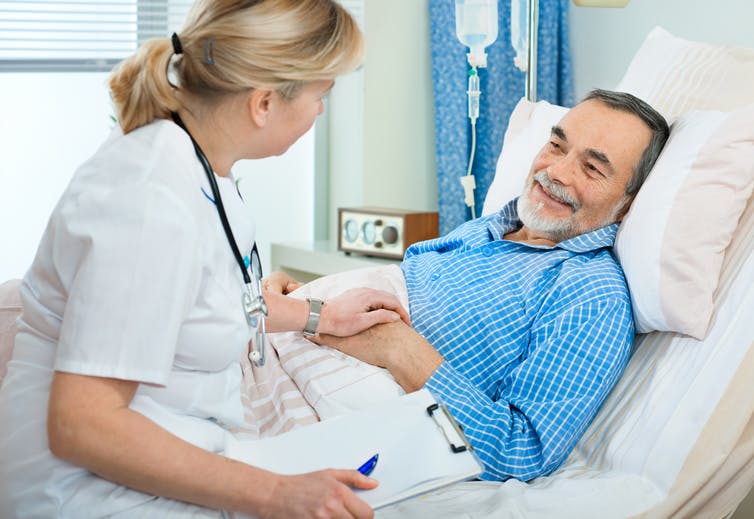Schaeffer Fellow William Padula and colleagues develop a simple protocol to prevent and manage pressure injury referenced in Federal Appropriations Legislative Package.
The 2020 federal appropriations bill to fund the U.S. Department of Veteran’s Affairs included language noting the VA should consider incorporating protocols to prevent pressure injuries that were developed by Schaeffer Center Fellow William Padula and colleagues. The recommendation comes amid heightened national attention that has prioritized pressure injury research and prevention in recent years.
A National Issue
Approximately 2.5 million patients develop a pressure injury in the United States each year. Pressure injuries, sometimes called pressure ulcers or bed sores, damage the skin and underlying tissue and can lead to complications including painful, chronic wounds and life-threatening infections. It is estimated that 60,000 deaths annually are the result of hospital-acquired pressure injuries (HAPI) and the cost to the U.S. healthcare system could exceed $26.8 billion. Furthermore, many of these injuries are preventable.
Though the risks of pressure injuries have been known for some time, many hospitals still struggle to incorporate the guidelines developed over the years because of the intense amount of nursing time, significant start-up costs, uncertain clinical effectiveness, and competing patient and hospital demands. As a result, progress has stalled.
“Pressure ulcers are the only [hospital-acquired condition] moving in the wrong direction, so while we have managed to stabilize or reduce these other conditions, pressure ulcers are still harming patients,” explained Padula in an article in Modern Healthcare.
Padula is a nationally-recognized expert on the issue. An assistant professor at the USC School of Pharmacy, he is on the board of directors and treasurer for the National Pressure Injury Advisory Panel (NPIAP), which develops industry recognized pressure injury prevention and treatment clinical guidelines.
A Simple Standardized Protocol
Padula’s body of research focuses on identifying quality-improvement interventions that can improve patient outcomes and reduce financial costs. For example, in a paper published in the British Medical Journal (BMJ) Quality & Safety, he demonstrated the most cost-effective strategy was a prevention-for-all patients approach, regardless of the patient’s initial risk assessment.
Recognizing these implementation challenges, Padula colleague Joyce Black from the University of Nebraska developed the Standardized Pressure Injury Prevention Protocol (SPIPP), which was published in Journal of Clinical Nursing. It bundles recognized quality-improvement interventions and is designed specifically to enhance best practice guidelines by combining concepts and technologies with the best available evidence. Formulated as a checklist, it takes the complexity of HAPI prevention and simplifies it into core components.
“The best way to standardize practices is through a checklist that streamlines consistency,” said Padula. “The Standardized Pressure Injury Prevention Protocol that I published is the first 1-page checklist that can be used as a reference tool for best practices.” In contrast, he explained, other published guidelines range from 40 to over 300 pages in length.
The NPIAP released the revised 2019 International Guidelines for Prevention and Treatment of Pressure Ulcers/Injuries at a forum at USC last November, which incorporated Padula’s work on a standardized protocol.
Policymakers are Taking Note
In 2019 the Veteran’s Administration prioritized prevention and prompt treatment of pressure injury. In a policy directive, the VA outlined best practices for pressure injury prevention and management as well as an overview of new technologies to mitigate their development. Padula’s standardized protocol was cited in a notice that accompanied the directive.
In 2018 the U.S. Senate added pressure-injury prevention as a priority research area and the U.S. House of Representatives approved language for a bill to recognize pressure injuries as a national emergency in the U.S. healthcare system.
